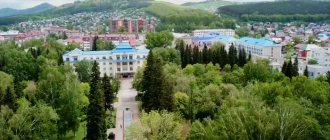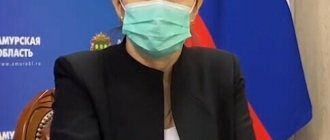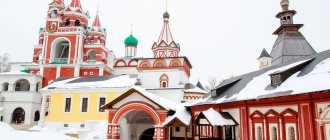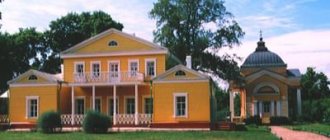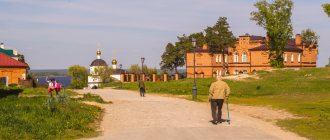This term has other meanings, see Hill (meanings).
| City Hill Coat of arms |
| A country | Russia, Russia |
| Subject of the federation | Novgorod regionNovgorod region |
| Municipal district | Kholmsky |
| urban settlement | Kholmskoe |
| Coordinates | 57°09′00″ n. w. 31°11′00″ E. d. / 57.15000° n. w. 31.18333° E. d. / 57.15000; 31.18333 (G) [www.openstreetmap.org/?mlat=57.15000&mlon=31.18333&zoom=12 (O)] (Z)Coordinates: 57°09′00″ N. w. 31°11′00″ E. d. / 57.15000° n. w. 31.18333° E. d. / 57.15000; 31.18333 (G) [www.openstreetmap.org/?mlat=57.15000&mlon=31.18333&zoom=12 (O)] (I) |
| Head of a city settlement | Salyaev Vitaly Ilyich |
| First mention | 1144 |
| City with | 1777 |
| Square | 9 km² |
| Center height | 65 |
| Population | ↘3493[1] people (2016) |
| Density | 388.11 people/km² |
| Timezone | UTC+3 |
| Telephone code | +7 81654 |
| Postal codes | 175270, 175271 |
| Vehicle code | 53 |
| OKATO code | [classif.spb.ru/classificators/view/okt.php?st=A&kr=1&kod=49247501 49 247 501] |
| Hill Moscow |
| Velikiy Novgorod Hill |
| Hill |
Audio, photo and video
on Wikimedia Commons
Hill
- a city (since 1777[2]) in Russia, the administrative center of the Kholm municipal district of the Novgorod region.
General information
Located in the south of the region at the confluence of the Kunya River with Lovat (Lake Ilmen basin), 201 km south of Veliky Novgorod.
There are three roads leading from the city: one ( P51
) through Poddorye connects Kholm with Staraya Russa, another (
P51
) through the village of Loknya in the Pskov region connects it with Velikiye Luki, the third leads to Marevo and Demyansk.
The population of the city is 3829 inhabitants (as of January 1, 2010). The etymology of the name is Russian, coming from the steep hill on the right bank of the Lovat, on which the city was founded.
Map
| Hill: maps |
Hill: photo from space (Google Maps) Hill: photo from space (Microsoft Virtual Earth)
| Hill. Nearest cities. Distances in km. on the map (in brackets along roads) + direction. Using the hyperlink in the distance , you can get the route (information courtesy of the AutoTransInfo website) | |||
| 1 | Poddorye | 35 (40) | WITH |
| 2 | Maryovo | 57 (83) | IN |
| 3 | Loknya (Pskov region) | 72 (82) | SW |
| 4 | Toropets | 77 (96) | YU |
| 5 | Bezhanitsy (Pskov region) | 80 (107) | Z |
| 6 | Andreapol | 86 (178) | SE |
| 7 | Dedovichi (Pskov region) | 86 (178) | NW |
| 8 | Volot | 90 (147) | WITH |
| 9 | Staraya Russa | 93 (108) | WITH |
| 10 | Parfino | 94 (128) | WITH |
| 11 | Demyansk | 94 (204) | NE |
| 12 | Peno (Tver region) | 96 (160) | IN |
| 13 | Kunya (Pskov region) | 96 (163) | YU |
| 14 | Velikie Luki | 99 (156) | SW |
| 15 | Bottom | 105 (229) | NW |
| 16 | Novosokolniki | 110 (190) | SW |
| 17 | Novorzhev | 112 (136) | Z |
| 18 | Western Dvina | 112 (153) | SE |
| 19 | Ostashkov | 115 (316) | Z |
| 20 | Soltsy | 119 (183) | NW |
| 21 | Porkhov | 119 (203) | NW |
| 22 | Shimsk | 120 (157) | WITH |
a brief description of
Located on the river. Lovat (Lake Ilmen basin), 103 km from the railway. Staraya Russa station, 201 km south of Veliky Novgorod.
Polistovo-Lovatsky Nature Reserve.
Territory (sq. km): 9
Information about the city of Kholm on the Russian Wikipedia site
Historical sketch
It was first mentioned in the Novgorod Chronicle in 1144 as a Kholm churchyard; name from the hill, which was part of the Novgorod land.
In the 13th-15th centuries. was repeatedly attacked by the Lithuanians in the 16th and 17th centuries. - Lithuanians, Poles, Swedes. In the 16th century referred to as the city of Kholm, later Kholmsky Posad.
Since 1727 in the Velikolutsk province of the Novgorod province. In 1777, Kholmsky Posad was transformed into the district town of Kholmsk of the Pskov governorship (from 1796 - Pskov province).
In 1856, in the district town of Kholm, Pskov province, there were 6 churches, 700 houses, 47 shops.
At the end of the 19th century. was famous for making river barges.
Since 1935, the regional center of the Kalinin region.
During the Great Patriotic War of 1941-45, it was occupied by Nazi troops from August 3, 1941. It was liberated on February 21, 1944 by troops of the 2nd Baltic Front during the Starorussko-Novorzhevsk operation.
In 1944-57. as part of the Velikiye Luki region, since 1958 in the Novgorod region.
Economy
Forest industry enterprises - Kholmsky Lesopunkt JSC, timber industry enterprise, Lesnoye LLP (souvenirs), Kholmsky Bread JSC, Kholmsky Bread Factory JSC.
Potatoes and grain crops are grown in the Kholmsky district. They raise cattle, goats, pigs, horses, and rabbits. Fur farming (mink).
Deposits of clay, sand and gravel mixtures.
Culture, science, education
Museum of the History of the City.
Architecture, sights
In the central square of the city there is a mass grave of the city’s defenders who fell in the Great Patriotic War.
Rdeisky Monastery (18th century), former estates of princes Bobrov (19th century) and Shakhovsky (18th century).
| Population by year (thousands of inhabitants) | |||||||
| 1856 | 5.1 | 1979 | 4.4 | 2005 | 4.2 | 2014 | 3.6 |
| 1897 | 5.9 | 1989 | 4.8 | 2006 | 4.1 | 2015 | 3.6 |
| 1913 | 6.8 | 1992 | 4.8 | 2007 | 4.0 | 2016 | 3.5 |
| 1926 | 5.5 | 1996 | 4.7 | 2008 | 3.9 | 2017 | 3.4 |
| 1931 | 4.2 | 1998 | 4.7 | 2010 | 3.8 | 2018 | 3.4 |
| 1939 | 6.1 | 2000 | 4.7 | 2011 | 3.8 | 2019 | 3.4 |
| 1959 | 3.0 | 2001 | 4.6 | 2012 | 3.8 | 2020 | 3.4 |
| 1970 | 3.8 | 2003 | 4.3 | 2013 | 3.7 | 2021 | 3.3 |
Story
In ancient times, a water trade route from the Varangians to the Greeks passed along the Lovat River through the territory of the modern city. In those days, small ships were built in this place, flax, carts, spinning wheels, and dishes (wooden and clay) were traded.
In the 16th-17th centuries it was repeatedly attacked by Lithuanians, Poles, and Swedes[3]. On August 3, 1777, when considering the issue of reorganizing the administrative-territorial division of the Novgorod province, a Decree was issued to rename the Kholmsky settlement into the city of Kholm and to include it in the Pskov province. So Kholm became the center of Kholm district.
At the end of the 19th century, the Hill was famous for its handicrafts, including the making of river barges and other boats.
The city suffered greatly during the Great Patriotic War: in 1942 it was the site of the Toropetsko-Kholm operation, and most of the city’s historical buildings were completely destroyed.
Historically, the city consisted of four districts - Ilyinsky
and
Nikolsky
(right bank of Kunya and Lovat),
Tatilovsky
(left bank of Lovat) and
Klinsky
(wedge between the rivers). After the war, the restoration of the Klin part of the city was considered inappropriate.
There is a curious error associated with the history of the city of Holm. In a number of books and articles, the date of the first mention of the city in chronicle sources is 1144 (from which it was proposed to trace the history of the city)[2]. In this case, the Novgorod first chronicle was implied; however, under this year it contains a record of a fire in Novgorod as a result of which Kholm
(part of the city) and the Church of the Prophet Elijah.
Secrets of the Hill
An American is writing a book about military operations in the Novgorod region
The collaboration between the Hill History Museum and US citizen, Master of Economics Dirk BURGDORF has lasted more than 15 years. The American came to Kholm six times. But the Internet is more helpful for regular communication.
The very fact of a foreigner’s long-term interest in the history of a Russian town is surprising. Dirk has long wanted to write a book about the fighting near the Hill during the Great Patriotic War. A lot of materials have accumulated, but there is not enough time. “I’ll retire in 5-7 years, then I’ll take up literary work,” he said in one of his last messages to the museum’s methodologist Elizaveta SEMYONOVA.
Elizaveta Petrovna said that Dirk ended up in Kholm because of his passion for military history. During a long business trip in Germany, he became interested in the topic of the last battles for Berlin, then the Battle of Stalingrad captured his attention. And having become acquainted with a propaganda book about the group of Major General Scherer, which was completely surrounded in Kholm for more than three months, the American wondered: why are the Wehrmacht soldiers so glorified in it, if in the end Germany lost the war?
It must be said that until now the battle for the Hill in Russian historiography of the Great Patriotic War is found only in notes. There are works dedicated to the divisions that fought near Kholm, there are memoirs of Soviet military leaders, but there is no complete picture of the events from August 1942, when the city was occupied by the Germans, to February 1944, when our troops drove them out of there. By the way, our authors write that street battles took place, and the Germans write that the city was abandoned by the Nazis without a fight.
The reason why the siege of the Hill does not attract the attention of Russian researchers is superficial. The topic is not very rewarding. In the book “The Privy Advisor to the Leader” by Vladimir Uspensky, this is well revealed: “The hill was extolled by Goebbels as a symbol of perseverance, set as an example to other troops... Like the defense of the Brest Fortress for us. With a stretch, of course...” Maybe an impartial observer is what is needed to study the Kholm blockade.
“I became interested in the history of the city in connection with the existence of the German sign “Holm Shield”. Like any other historian, I want to be the first to reveal a truly important topic,” admits Dirk Burgdorf. “The events are so dramatic that they should not be given any political overtones.”
Participating in online auctions, he finds interesting materials related to the history of the Hill, collaborates with a Japanese collector, who came into the hands of photo albums of German officers who captured the city. He then sends some scanned images to the Kholm Museum. Thus, Dirk helped in the design of a separate stand dedicated to the occupation of the Hill and donated an appliqué from elements of a German aerial photograph of the area. The museum has a foreign board game, Combat Team Scherer, developed and released with the participation of an American. It reproduces the tactical situation in Kholm in the winter and summer of 1942. As Elizaveta Petrovna put it, it’s tricky to play, but they accepted it into the collection.
In October, Dirk Burgdorf sent 10 new photographs to the district museum. Their uniqueness lies in the fact that they depict the not yet destroyed Hill of 1941. The Germans posed on the streets of the summer city in front of the churches. Apparently, they wanted to amaze their frau who stayed at home.
However, 75 years later, looking at the yellowed photographs, local historians of the Hill are surprised. It is known that at the beginning of the war there were six churches in the city, half of which were wooden. Naturally, during the battles they were completely burned, and establishing their location is now problematic. Thanks to one of the pictures sent by Dirk, we were able to find out where one of them was located. There is a rare photograph in the museum’s collection of the Church of the Resurrection with its interior decoration.
Burgdorf hopes that one of the city's old-timers will be able to identify themselves or their friends in the photographs donated to the museum. Still a naive American... The number of victims among civilians on the Hill still remains unknown.
Photo from the archives of the Museum of the History of the City of Kholm
Attractions
30 kilometers from the city on Lake Rdeiskoye are the remains of the Rdeiskoye Monastery (XVIII century), in the area are the former estates of the princes Bobrov (XIX century) and Shakhovsky (XVIII century).
One of the favorite vacation spots of the hill people is the Blue Lagoon. This is a natural threshold of the Mesozoic geological plate on the Big Tuder River. The place is truly amazing, and the water there has healing properties due to the occurrence of blue clays in the area. Many people who want to restore their strength visit this place in the summer, when the Blue Lagoon is available for swimming.
Notes
- ↑ 12
www.gks.ru/free_doc/doc_2016/bul_dr/mun_obr2016.rar Population of the Russian Federation by municipalities as of January 1, 2016 - ↑ 12
THE USSR. Administrative-territorial division of the union republics on January 1, 1980 / Compiled by V. A. Dudarev, N. A. Evseeva. - M.: Publishing house "Izvestia of the Soviets of People's Deputies of the USSR", 1980. - 702 p. — P. 180. - Kholm, district town of Pskov province // Encyclopedic Dictionary of Brockhaus and Efron: in 86 volumes (82 volumes and 4 additional). - St. Petersburg, 1890-1907.
- Statistical image of cities and towns of the Russian Empire until 1825. Comp. from the official information under the direction of the Director of the Police Department, Executive Stehr. St. Petersburg, 1829.
- Review of the state of the cities of the Russian Empire in 1833 / Ed. at the Ministry of Internal Affairs. - St. Petersburg, 1834.
- Statistical tables on the state of cities of the Russian Empire. Comp. in Stat. dept. Council of the Ministry of Internal Affairs. - St. Petersburg, 1840.
- Statistical tables of the Russian Empire, compiled and published by order of the Minister of Internal Affairs Stat. department of the Central Statistical Committee. [Vol. 1]. For the year 1856. St. Petersburg, 1858.
- Statistical timebook of the Russian Empire. Series 1. Vol. 1. St. Petersburg, 1866.
- Statistical timebook of the Russian Empire. Series 2. Vol. 1. - St. Petersburg, 1871, p. 180.
- Statistical timebook of the Russian Empire. Series 2. Vol. 10. St. Petersburg, 1875, p. 98.
- Statistics of the Russian Empire. 1: Collection of information on Russia for 1884-1885. St. Petersburg, 1887, p. 24.
- demoscope.ru/weekly/ssp/rus_gub_97.php?reg=34
- ↑ 1234
Cities of the USSR / NKVD of the RSFSR, Stat. Department. - M., 1927 - ↑ 12345678910111213
[www.MojGorod.ru/novgorod_obl/holm/index.html People's encyclopedia “My City”. Hill (city)]. Retrieved June 17, 2014. [www.webcitation.org6QOerqQU8/ Archived from the original on June 17, 2014]. - All-Union Population Census of 1926 = Recensement de la population de L'URSS 1926 / Central Statistical Office of the USSR; Dept. census. T.2. Western region. Central Industrial Region: nationality, native language, age, literacy. - M.: Publishing house. Central Statistical Office of the USSR, 1928
- RGAE, f. 1562, op. 336, no. 1248, pp. 49-57.
- [demoscope.ru/weekly/ssp/rus59_reg2.php All-Union Population Census of 1959. The size of the urban population of the RSFSR, its territorial units, urban settlements and urban areas by gender] (Russian). Demoscope Weekly. Retrieved September 25, 2013. [www.webcitation.org/6GDOghWC9 Archived from the original on April 28, 2013].
- [demoscope.ru/weekly/ssp/rus70_reg2.php All-Union Population Census of 1970 The size of the urban population of the RSFSR, its territorial units, urban settlements and urban areas by gender.] (Russian). Demoscope Weekly. Retrieved September 25, 2013. [www.webcitation.org/6GDOiMstp Archived from the original on April 28, 2013].
- [demoscope.ru/weekly/ssp/rus79_reg2.php All-Union Population Census of 1979 The size of the urban population of the RSFSR, its territorial units, urban settlements and urban areas by gender.] (Russian). Demoscope Weekly. Retrieved September 25, 2013. [www.webcitation.org/6GDOjhZ5L Archived from the original on April 28, 2013].
- [demoscope.ru/weekly/ssp/rus89_reg2.php All-Union Population Census of 1989. Urban population]. [www.webcitation.org/617x0o0Pa Archived from the original on August 22, 2011].
- [www.perepis2002.ru/ct/doc/1_TOM_01_04.xls All-Russian Population Census 2002. Volume. 1, table 4. Population of Russia, federal districts, constituent entities of the Russian Federation, districts, urban settlements, rural settlements - regional centers and rural settlements with a population of 3 thousand or more]. [www.webcitation.org/65AdCU0q3 Archived from the original on February 3, 2012].
- [www.gks.ru/bgd/regl/B09_109/IssWWW.exe/Stg/d01/tabl-21-09.xls Number of permanent population of the Russian Federation by cities, urban-type settlements and districts as of January 1, 2009]. Retrieved January 2, 2014. [www.webcitation.org/6MJmu0z1u Archived from the original on January 2, 2014].
- [novgorodstat.gks.ru/wps/wcm/connect/rosstat_ts/novgorodstat/resources/b00dff804edfeae3a933a93467c8ff84/Table+12.pdf All-Russian Population Census 2010. 12. Population of municipal districts, settlements, urban and rural settlements of the Novgorod region]. Retrieved February 2, 2014. [www.webcitation.org/6N5OGNTw6 Archived from the original on February 2, 2014].
- [www.gks.ru/free_doc/doc_2012/bul_dr/mun_obr2012.rar Population of the Russian Federation by municipalities. Table 35. Estimated resident population as of January 1, 2012]. Retrieved May 31, 2014. [www.webcitation.org/6PyOWbdMc Archived from the original on May 31, 2014].
- [www.gks.ru/free_doc/doc_2013/bul_dr/mun_obr2013.rar Population of the Russian Federation by municipalities as of January 1, 2013. - M.: Federal State Statistics Service Rosstat, 2013. - 528 p. (Table 33. Population of urban districts, municipal districts, urban and rural settlements, urban settlements, rural settlements)]. Retrieved November 16, 2013. [www.webcitation.org/6LAdCWSxH Archived from the original on November 16, 2013].
- [www.gks.ru/free_doc/doc_2014/bul_dr/mun_obr2014.rar Table 33. Population of the Russian Federation by municipalities as of January 1, 2014]. Retrieved August 2, 2014. [www.webcitation.org/6RWqP50QK Archived from the original on August 2, 2014].
- [www.gks.ru/free_doc/doc_2015/bul_dr/mun_obr2015.rar Population of the Russian Federation by municipalities as of January 1, 2015]. Retrieved August 6, 2015. [www.webcitation.org/6aaNzOlFO Archived from the original on August 6, 2015].
- taking into account the cities of Crimea
- [www.gks.ru/free_doc/doc_2016/bul_dr/mun_obr2016.rar Population of the Russian Federation by municipalities as of January 1, 2016. Table “31. Population of cities and towns by federal districts and constituent entities of the Russian Federation as of January 1, 2016.” RAR archive (1.0 MB)]
- Temmo A. M., Vyazinin I. N.
Golden stars of Novgorodians. - L.: Lenizdat, 1987. - 272 p. — P. 57.
Literature
- Kotov V.V.
[cyberleninka.ru/article/n/skolko-let-holmu-na-lovati How old is the Hill on Lovat?] // Pskov. Scientific-practical, historical and local history journal. - 2008. - No. 28. - P. 3-7. - Kotov V.V.
[cyberleninka.ru/article/n/holmskaya-krepost-xvi-veka Kholmskaya fortress of the 16th century] // Pskov. Scientific-practical, historical and local history journal. - 2008. - No. 29. - P. 3-15. - Kotov V.V.
[cyberleninka.ru/article/n/ekskursiya-v-gorod-holm-xvi-veka Excursion to the city of Holm of the 16th century] // Pskov. Scientific-practical, historical and local history journal. - 2013. - No. 38. - P. 43-51.
Hill
(Novgorod region)
OKATO code:
49247501
Founded:
1144
City since:
1777 City of district subordination (Kholmsky district, Novgorod region)
Center:
Kholmsky district
Telephone code (reference phone)
| 81654***** | 51-3-66 |
Deviation from Moscow time, hours:
0
Geographic latitude:
57°09′
Geographic longitude:
31°11′
Altitude above sea level, meters:
65 Sunrise and sunset times in the city of Kholm
An excerpt characterizing the Hill (city)
- No. “If it were true that he was defeated, then the news would come.” “Probably,” said Prince Andrei and headed towards the exit door; but at the same time, a tall, obviously visiting, Austrian general in a frock coat, with a black scarf tied around his head and with the Order of Maria Theresa around his neck, quickly entered the reception room, slamming the door. Prince Andrei stopped. - General Chief Kutuzov? - the visiting general quickly said with a sharp German accent, looking around on both sides and walking without stopping to the office door. “The general in chief is busy,” said Kozlovsky, hastily approaching the unknown general and blocking his path from the door. - How would you like to report? The unknown general looked contemptuously down at the short Kozlovsky, as if surprised that he might not be known. “The general in chief is busy,” Kozlovsky repeated calmly. The general's face frowned, his lips twitched and trembled. He took out a notebook, quickly drew something with a pencil, tore out a piece of paper, gave it to him, walked quickly to the window, threw his body on a chair and looked around at those in the room, as if asking: why are they looking at him? Then the general raised his head, craned his neck, as if intending to say something, but immediately, as if casually starting to hum to himself, he made a strange sound, which immediately stopped. The door to the office opened, and Kutuzov appeared on the threshold. The general with his head bandaged, as if running away from danger, bent down and approached Kutuzov with large, fast steps of his thin legs. “Vous voyez le malheureux Mack, [You see the unfortunate Mack.],” he said in a broken voice. The face of Kutuzov, standing in the doorway of the office, remained completely motionless for several moments. Then, like a wave, a wrinkle ran across his face, his forehead smoothed out; He bowed his head respectfully, closed his eyes, silently let Mac pass by him and closed the door behind himself. The rumor, already spread before, about the defeat of the Austrians and the surrender of the entire army at Ulm, turned out to be true. Half an hour later, adjutants were sent in different directions with orders proving that soon the Russian troops, which had hitherto been inactive, would have to meet the enemy. Prince Andrei was one of those rare officers at the headquarters who believed his main interest was in the general course of military affairs. Having seen Mack and heard the details of his death, he realized that half of the campaign was lost, understood the difficulty of the position of the Russian troops and vividly imagined what awaited the army, and the role that he would have to play in it. Involuntarily, he experienced an exciting, joyful feeling at the thought of disgracing arrogant Austria and the fact that in a week he might have to see and take part in a clash between the Russians and the French, for the first time since Suvorov. But he was afraid of the genius of Bonaparte, who could be stronger than all the courage of the Russian troops, and at the same time could not allow shame for his hero. Excited and irritated by these thoughts, Prince Andrei went to his room to write to his father, to whom he wrote every day. He met in the corridor with his roommate Nesvitsky and the joker Zherkov; They, as always, laughed at something. -Why are you so gloomy? – Nesvitsky asked, noticing the pale face of Prince Andrei with sparkling eyes. “There’s no point in having fun,” Bolkonsky answered. While Prince Andrei met with Nesvitsky and Zherkov, on the other side of the corridor, Strauch, an Austrian general who was at Kutuzov’s headquarters to monitor the food supply of the Russian army, and a member of the Gofkriegsrat, who had arrived the day before, walked towards them. There was enough space along the wide corridor for the generals to freely disperse with three officers; but Zherkov, pushing Nesvitsky away with his hand, said in a breathless voice: “They’re coming!... they’re coming!... step aside, get out of the way!” please the way! The generals passed by with an air of desire to get rid of bothersome honors. The face of the joker Zherkov suddenly expressed a stupid smile of joy, which he seemed unable to contain. “Your Excellency,” he said in German, moving forward and addressing the Austrian general. – I have the honor to congratulate you. He bowed his head and awkwardly, like children learning to dance, began to shuffle first with one foot and then with the other. The general, a member of the Gofkriegsrat, looked sternly at him; without noticing the seriousness of the stupid smile, he could not refuse a moment’s attention. He narrowed his eyes to show that he was listening. “I have the honor to congratulate you, General Mack has arrived, he’s completely healthy, he just got a little sick,” he added, beaming with a smile and pointing to his head. The general frowned, turned away and walked on. – Gott, wie naiv! [My God, how simple it is!] - he said angrily, walking away a few steps. Nesvitsky hugged Prince Andrei with laughter, but Bolkonsky, turning even paler, with an angry expression on his face, pushed him away and turned to Zherkov. The nervous irritation into which the sight of Mack, the news of his defeat and the thought of what awaited the Russian army led him, found its outcome in anger at Zherkov’s inappropriate joke. “If you, dear sir,” he spoke shrilly with a slight trembling of his lower jaw, “want to be a jester, then I cannot prevent you from doing so; but I declare to you that if you dare to make fun of me in my presence another time, then I will teach you how to behave. Nesvitsky and Zherkov were so surprised by this outburst that they silently looked at Bolkonsky with their eyes open. “Well, I just congratulated,” said Zherkov. – I’m not joking with you, please remain silent! - Bolkonsky shouted and, taking Nesvitsky by the hand, walked away from Zherkov, who could not find what to answer. “Well, what are you talking about, brother,” Nesvitsky said calmingly. - Like what? - Prince Andrei spoke, stopping from excitement. - Yes, you must understand that we are either officers who serve our tsar and fatherland and rejoice in the common success and are sad about the common failure, or we are lackeys who do not care about the master’s business. Quarante milles hommes massacres et l'ario mee de nos allies detruite, et vous trouvez la le mot pour rire,” he said, as if cementing his opinion with this French phrase. - C'est bien pour un garcon de rien, comme cet individu, dont vous avez fait un ami, mais pas pour vous, pas pour vous. [Forty thousand people died and the army allied to us was destroyed, and you can joke about it. This is forgivable for an insignificant boy like this gentleman whom you made your friend, but not for you, not for you.] Boys can only have fun like this,” said Prince Andrei in Russian, pronouncing this word with a French accent, noting that Zherkov could still hear him. He waited to see if the cornet would answer. But the cornet turned and left the corridor. The Pavlograd Hussar Regiment was stationed two miles from Braunau. The squadron, in which Nikolai Rostov served as a cadet, was located in the German village of Salzenek. The squadron commander, captain Denisov, known throughout the cavalry division under the name Vaska Denisov, was allocated the best apartment in the village. Junker Rostov, ever since he caught up with the regiment in Poland, lived with the squadron commander. On October 11, the very day when everything in the main apartment was raised to its feet by the news of Mack's defeat, at the squadron headquarters, camp life calmly went on as before. Denisov, who had lost all night at cards, had not yet come home when Rostov returned from foraging early in the morning on horseback. Rostov, in a cadet's uniform, rode up to the porch, pushed his horse, threw off his leg with a flexible, youthful gesture, stood on the stirrup, as if not wanting to part with the horse, finally jumped off and shouted to the messenger.
